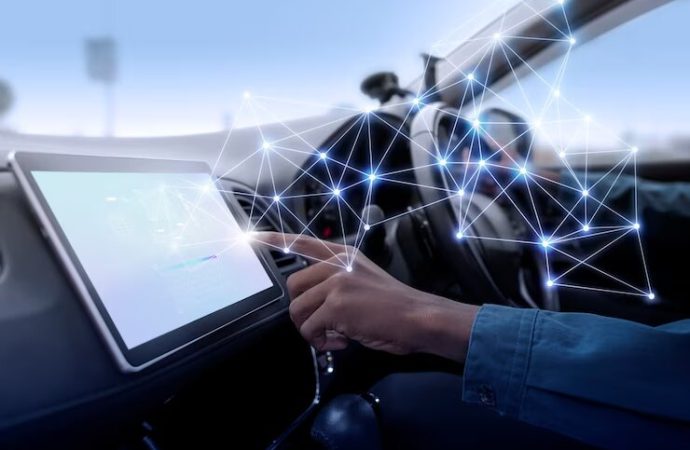Buckle up, folks! The future of transportation is here, and it’s nothing like we’ve seen before. From flying cars to self-driving vehicles, the world is rapidly transforming how we move around. What seemed like a distant dream just a few years ago is now becoming a reality – and it’s happening faster than you think!
Buckle up, folks! The future of transportation is here, and it’s nothing like we’ve seen before. From flying cars to self-driving vehicles, the world is rapidly transforming how we move around. What seemed like a distant dream just a few years ago is now becoming a reality – and it’s happening faster than you think! In this blog post, we’ll explore some of the most exciting innovations in transportation that are shaping our world today. So sit back, relax and get ready for an exhilarating ride into the future!
Self-Driving Cars
Self-driving cars are one of the most talked about innovations in transportation. They have the potential to transform our world by making it safer, more efficient, and more accessible. But what exactly are self-driving cars, and how do they work?
Self-driving cars are also known as autonomous or driverless cars. They are vehicles that are equipped with sensors and computers that enable them to drive themselves without the need for a human driver.
How do they work? Self-driving cars use a variety of sensors to detect their surroundings and make decisions about where to go next. These sensors can include things like radar, lidar (light detection and ranging), cameras, and GPS. The data from these sensors is processed by algorithms that enable the car to navigate its environment.
One of the biggest advantages of self-driving cars is that they have the potential to make our roads much safer. Human error is a major contributor to traffic accidents, but self-driving cars can eliminate this risk. In addition, self-driving cars can help us to reduce traffic congestion and save time and money.
Self-driving cars are still in development, but there are already a number of companies working on this technology. Google has been testing self-driving cars for several years, and Tesla has recently released a semi-autonomous car called the Model S. It is likely that we will see continued progress in this area in the years to come.
Electric Vehicles
The future of transportation is electric. Electric vehicles are cheaper to operate and maintain than gas-powered cars, and produce zero emissions. Many major automakers are investing in electric vehicle technology, and many countries are adopting policies to encourage the use of electric vehicles.
The adoption of electric vehicles is being driven by a number of factors, including the need to reduce greenhouse gas emissions, the declining cost of batteries and solar power, and the improving performance of electric vehicles. Electric vehicles are becoming increasingly popular in both developed and developing countries.
In developed countries, electric vehicles make up a small but growing share of new car sales. In Norway, for example, sales of electric vehicles grew from 2 percent in 2013 to 22 percent in 2017. In China, sales of new energy vehicles (which includes hybrids and plug-in hybrids) grew from 1 percent in 2015 to 7 percent in 2018. And in the United States, sales of electric vehicles grew from 0.6 percent in 2012 to 2 percent in 2016.
In developing countries, electric vehicles are being adopted more slowly but are still expected to grow rapidly. In India, for example, sales of electric two-wheelers (primarily motorcycles and scooters) grew from 0.1 percent in 2010 to 3 percent in 2016. And in Africa, sales of electric cars are expected to grow from just over 1,000 units in 2016 to nearly 1 million units by 2030.
A number of policy initiatives are encouraging the adoption of electric
Hyperloop
The Hyperloop is a new mode of transportation that could revolutionize the way we travel. The system consists of a sealed tube or system of tubes through which a pod or vehicle can travel at high speeds with little or no friction. The concept was first proposed by Elon Musk, the founder of Tesla and SpaceX, in 2013, and has since been developed by a number of companies.
The potential benefits of the Hyperloop are numerous. The technology has the potential to greatly reduce travel times between cities, making it a viable option for long-distance travel. Additionally, the system is much more energy-efficient than traditional modes of transportation such as airplanes and trains, and could potentially be powered entirely by renewable energy sources.
There are still many challenges to be faced before the Hyperloop becomes a reality. Chief among these is the development of a safe and reliable system for propulsion. However, if these challenges can be overcome, the Hyperloop has the potential to change the way we live and work by providing an efficient and sustainable means of transportation.
Flying Cars
The future of transportation is here, and it’s transforming the way we move around the world. Flying cars are one of the most exciting innovations in this space, and they’re already starting to change the way we travel.
Flying cars are still in their early stages of development, but they hold tremendous potential for revolutionizing transportation. They could potentially reduce traffic congestion and make traveling between cities much faster and easier. In the future, flying cars could even become a common form of transportation for everyday people.
Currently, there are a few companies working on developing flying cars, and it’s likely that we’ll see them on the market within the next few years. If you’re looking to stay ahead of the curve, keep an eye on the development of flying cars – they’re sure to change the way we travel in the years to come.
How these innovations will change the way we live
Today, we are on the cusp of a transportation revolution. New technologies and approaches are emerging that have the potential to dramatically change the way we move around cities and connect with each other.
On-demand ride-sharing services like Uber and Lyft are already beginning to transform urban transportation, providing a convenient and affordable alternative to traditional taxi services. In the future, these services could become even more widespread as self-driving cars become more common.
Similarly, new developments in public transit are making it easier than ever to get around cities without a car. Services like Zipcar allow people to rent cars by the hour, while bike-sharing programs provide an easy way to get around town without having to own a bike.
All of these innovations are making it easier and more convenient to get around cities without owning a car. This could have a major impact on traffic congestion and pollution levels in urban areas, as well as improve quality of life for city dwellers.
Conclusion
It is clear that transportation innovations are shaping how we move around the world, and this trend will only continue to grow. With technological advancements such as driverless cars and high-speed railways, our ability to travel further distances in shorter amounts of time has been revolutionized. The future of transportation looks incredibly promising with exciting new developments on the horizon – these possibilities are truly transforming our world for the better.





















Leave a Comment
Your email address will not be published. Required fields are marked with *